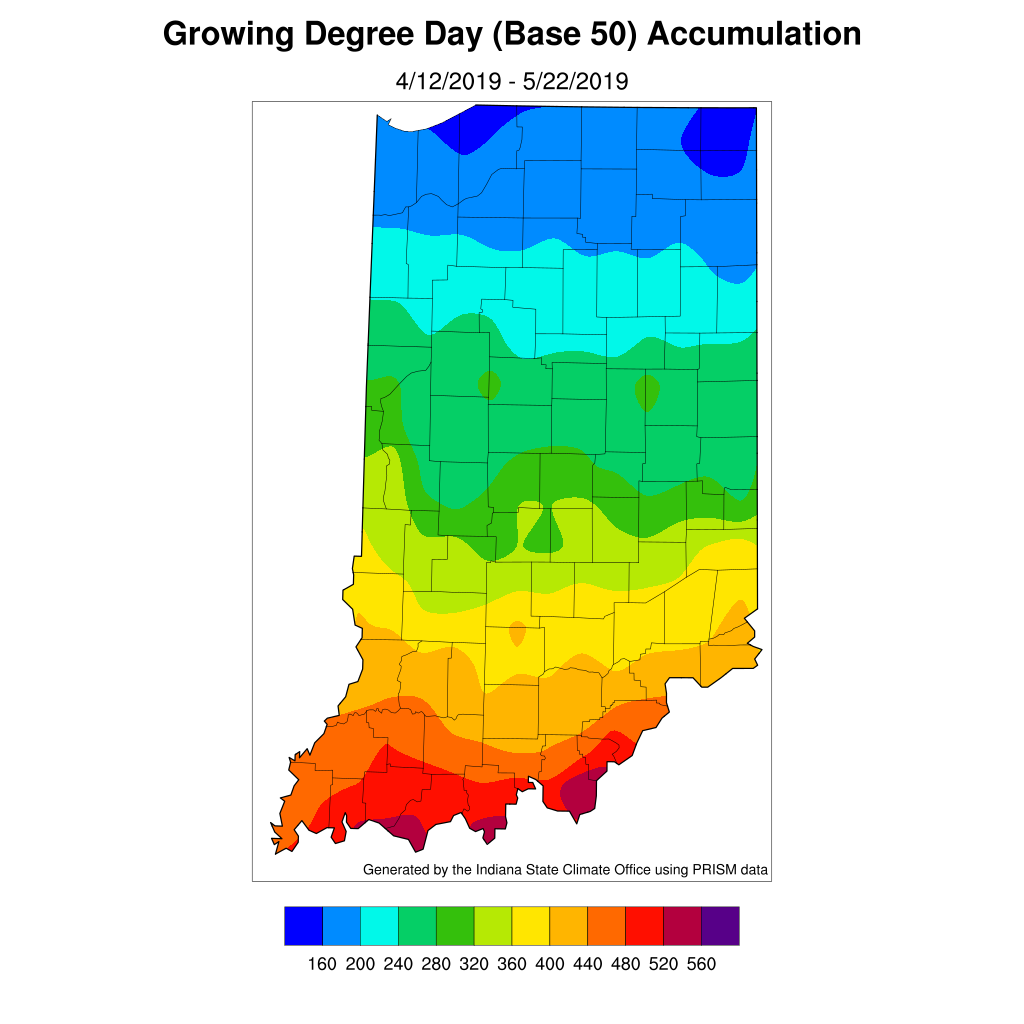The following map, based on GDD50, is provided to assist in timely scouting of emerged cornfields for black cutworm damage. Those areas of the state that have accumulated, or exceeded, 300 GDDs since the second week of April (multiple, significant moth flights into the state) should be monitored, especially if weedy before/during planting. Because black cutworm moths were present before that time, and they continue to arrive, it is not uncommon to find larvae of varying sizes in fields. Happy Scouting!



